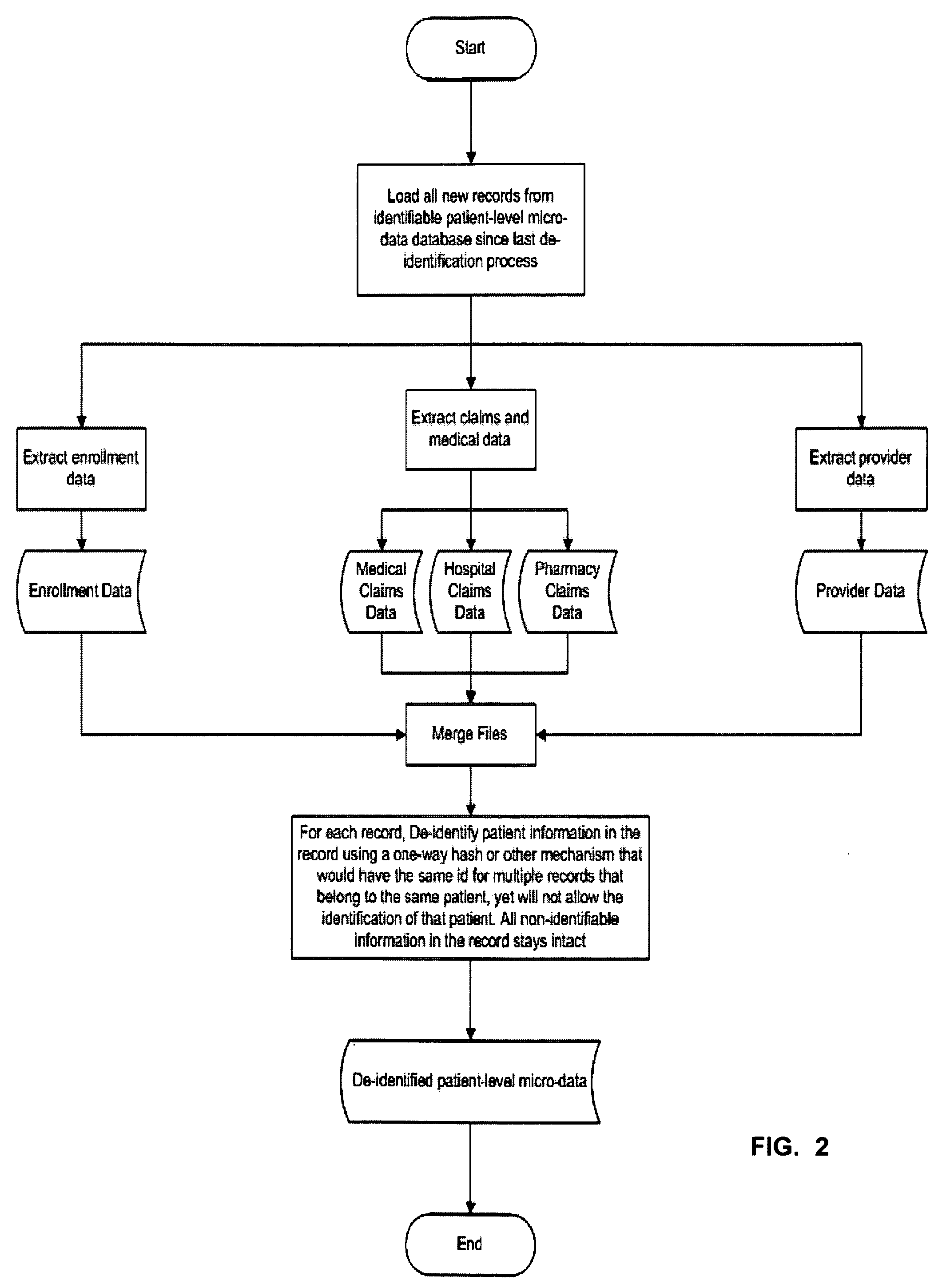Double Blinded Privacy-Safe Distributed Data Mining Protocol
a distributed data mining and privacy-safe technology, applied in the field of data privacy and data usage, can solve the problems of alarming, and unique level of a record, and achieve the effects of significant cost increase, alarming rate, and unprecedented rate of health care expenditure and utilization
- Summary
- Abstract
- Description
- Claims
- Application Information
AI Technical Summary
Benefits of technology
Problems solved by technology
Method used
Image
Examples
Embodiment Construction
[0100]Note: Solely for the sake of simplicity—in order that the ordinary man of the art may appreciate the unique facility of the instant protocol, the (non-limiting) example of detail will be for the health care industry. One reason for this choice is that compliance with HIPAA (Health Insurance Portability and Accountability Act of 1996) is a well-known semi-intractable problem that is adequately documented for use as an objective metric of the usefulness of the instant invention. Thus, the instant example relates to using embodiments of the Protocol of the present invention as a computer-implemented method for profiling health programs while maintaining participant privacy. (The specific background details related to health care information systems are presented in the latter part of the background section.)
[0101]Simply stated, embodiments of the instant profile are computer-implemented for profiling health programs—to assist program planners such as marketing managers from pharm...
PUM
 Login to View More
Login to View More Abstract
Description
Claims
Application Information
 Login to View More
Login to View More - R&D
- Intellectual Property
- Life Sciences
- Materials
- Tech Scout
- Unparalleled Data Quality
- Higher Quality Content
- 60% Fewer Hallucinations
Browse by: Latest US Patents, China's latest patents, Technical Efficacy Thesaurus, Application Domain, Technology Topic, Popular Technical Reports.
© 2025 PatSnap. All rights reserved.Legal|Privacy policy|Modern Slavery Act Transparency Statement|Sitemap|About US| Contact US: help@patsnap.com



